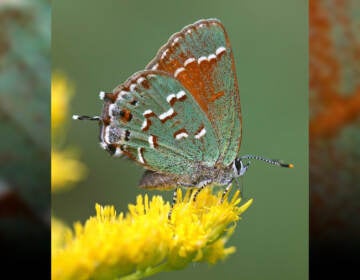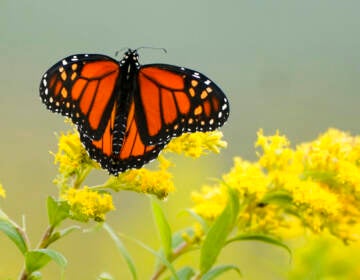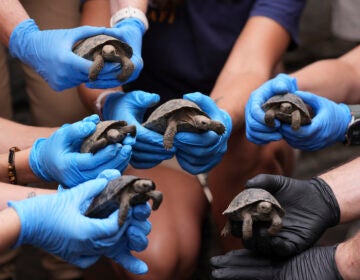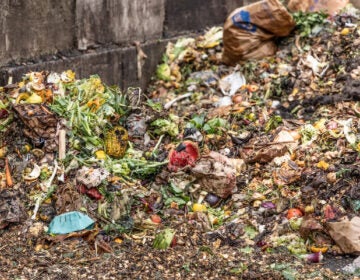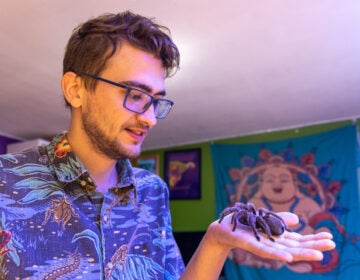A ‘heist’ that never happened? Inside years of strife at the Philadelphia Insectarium
After dealing with the aftermath of a supposed “heist,” the museum's recent financial troubles and internal strife are fueling further problems, including ongoing lawsuits.
Listen 5:20
The Philadelphia Insectarium & Butterfly Pavilion on Frankford Avenue in the Northeast section of the city. (Kimberly Paynter/WHYY)
When the Philadelphia Insectarium and Butterfly Pavilion announced that thieves had broken in and stolen thousands of live insects from its collection in 2018, the story made national news, including a mention on “Jimmy Kimmel Live.”
Among the alleged $40,000 worth of stolen creatures were cockroaches, scorpions, butterflies, centipedes, tarantulas, and lizards.
Citing surveillance footage as evidence, museum CEO John Cambridge continues to blame the “heist” on former, disgruntled employees.
But those former employees say there was no heist.
They tell WHYY News that they brought in their own pets — insects, snakes, and other creatures — to beef up the museum’s exhibits. After quitting their jobs, they took back what was rightfully theirs.
Cambridge calls this “ludicrous.” And now, the museum’s recent financial troubles and internal strife are fueling further problems, including ongoing lawsuits, and bankruptcy.
How did the 30-year-old Philadelphia institution get to this point?

A dream job offer, turned sour
Entomologist Trisha Nichols has loved insects her whole life.
In 2016, Cambridge, who had recently become the Insectarium CEO, met her at an entomology conference. She was 25 at the time.
The following year, Cambridge approached her at a different conference, and offered her a job at the Insectarium — director of animal care. He told her he had seen, and was impressed by, the educational videos she had posted on YouTube.
Nichols initially turned down the offer — she was already happy running her own business in Michigan. But Cambridge was persistent, and so she reconsidered. She had dreams of running her own insect museum someday, and she thought she could learn from this opportunity.
“As a person who had just gotten out of my entomology degree, getting a directorship position at a museum is big. He also offered me a position on the board of directors,” she recalled. “My parents were a little cautious about it, and other individuals at the conference were like, ‘Hey … maybe you shouldn’t be working with this guy … he seems kind of fishy.'”
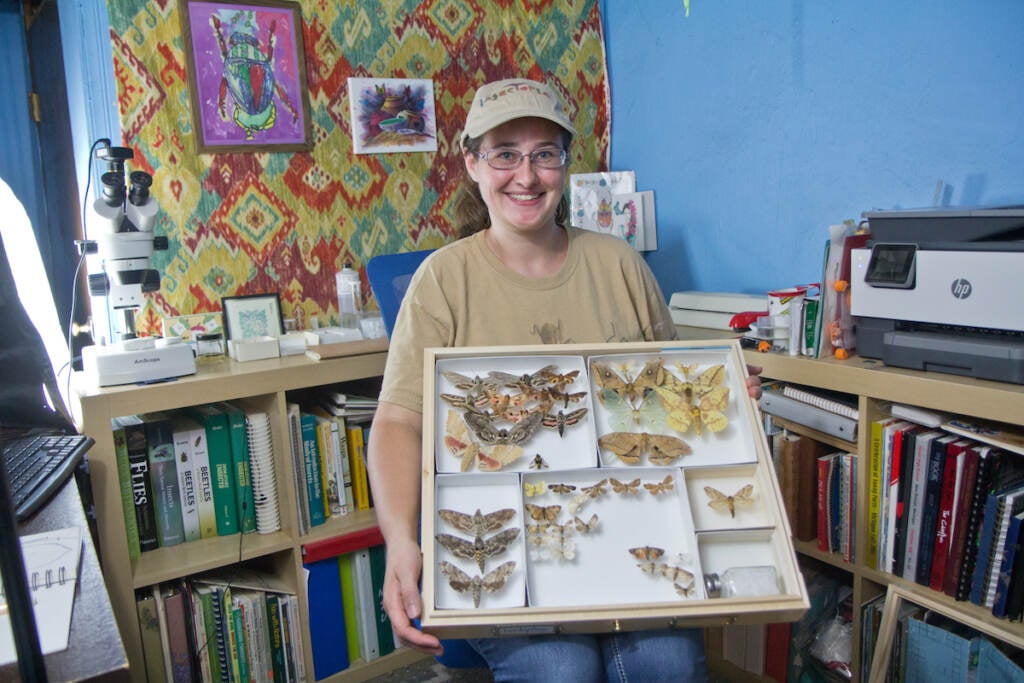
But she took the job, moved to Philadelphia, and arrived to chaos.
Cambridge had fired around 10 longtime employees who had worked under the previous owner, citing their attendance issues. Nichols said the few remaining employees in animal care were suspicious of her and thought she was loyal to Cambridge. She also said Cambridge did not give the department enough money to function properly.
“John kept saying, ‘We have as much money as you need … What do you want? I can buy you things.’ But then, when I said, ‘All right, we need this, this and this,’ he says, ‘All right, well, why don’t you find it for free here? Why don’t you go out into the woods and collect stuff?'”
Nichols said running the department was “practically impossible without funding.”
For example, she recalled asking for money to buy bramble as food for the museum’s stick insects. She said that instead of buying bramble that would be free of pesticides, Cambridge asked her and her team to collect rose and privet and other plants that the insects would eat. Pesticide exposure killed some of those insects, Nichols said.
Cambridge says the accusation was “ridiculous,” adding that it would have been cheaper to buy plant material rather than pay employees to collect them in the wild. In his experience, he said, sometimes insect colonies struggle and die, and it’s hard to figure out why. He also said the museum reimburses employees for all work expenses.
Nichols, by her own admission, ended up not well-suited for the job, and she didn’t want to participate in an internal competition for who would become the next director of animal care. But she kept working at the museum, and helped create the museum’s education department.
Shortly after, Chris Tomasetto became director of animal care. He had started as a part-time, and then full-time member of the animal care staff.
The department continued to struggle with underfunding. To keep the museum afloat, Tomasetto and his staff decided to take matters into their own hands — they brought in their own personal insects and animals to add to the collection, including geckos, spiders, and snakes.
“You couldn’t work in the building and not know that those animals were brought in by … the director,” Nichols said. Several former Insectarium employees confirmed this, including Chrissy Rzepnicki, director of operations from 2017 to 2021.
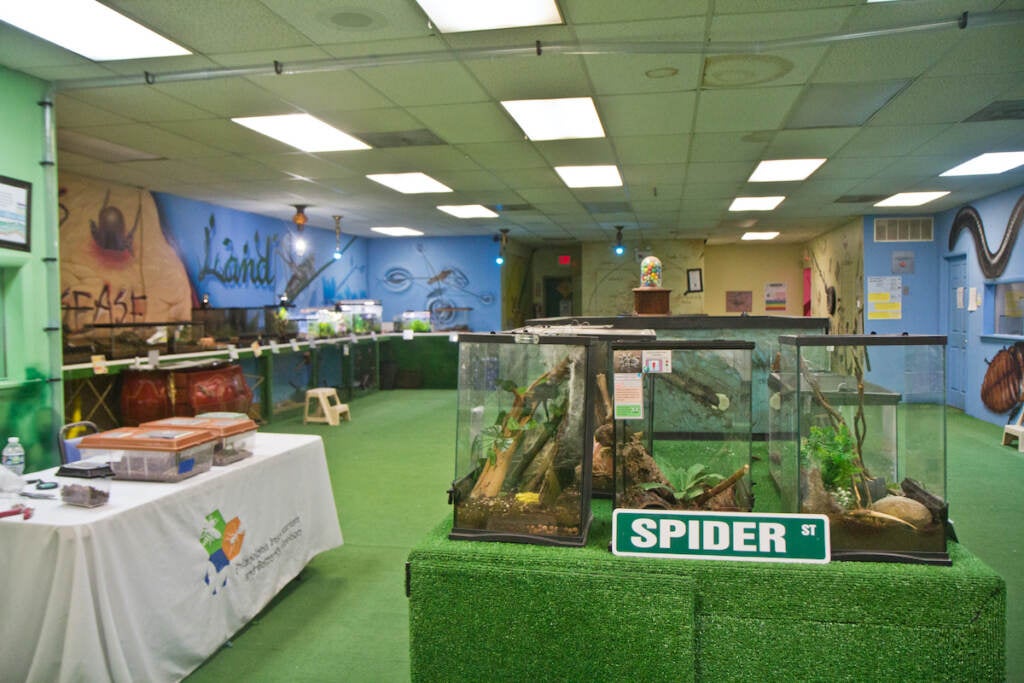
“I know that the animal care staff … had kept many of their own personal insects up there in animal care because we just… as a museum, could not financially afford a collection,” Rzepnicki said. “So they had offered to John to bring in their own collection, which John approved.”
Among the new additions to the museum was Alison Mumper’s ball python, which she trained staff to handle. Mumper, who also worked in the animal care department, continued to buy its food and come in on her days off to care for the python, among her other animals that she brought to the museum.
Tomasetto said he, like Nichols, had quite a few disagreements with Cambridge about how the department did not have adequate resources. For example, he said asking Cambridge to buy specialized lights that are essential to keeping some plants alive was “like pulling teeth.”
“It’s an educational facility, and we were doing things so improperly that it just blows my mind sometimes.”
Cambridge said that did not happen.
Mumper said that in the summer of 2018, just before the reported heist, the museum’s off-site events ramped up. Employees packed up animals in their own cars and would drive to locations throughout Philadelphia.
“Even with two more people and summer interns, each of us that drove, we’re doing three to five travel shows with our own cars a day, driving all over the city,” Mumper said. Tomasetto said it was a hectic and chaotic time, with animal care staff traveling to shows and also taking care of the animals at the museum.
“It was a hard thing to watch the place go downhill the way that it did … kind of up in smoke.”
Tomasetto suspected that Cambridge would not want him around, given their public disagreements. After those series of shows, Cambridge left for a conference. When he returned, he fired Tomasetto. (Tomasetto and Mumper are now dating.)
But the animal care team had an informal agreement: If Cambridge fired Tomasetto, the others would quit in solidarity.
Tomasetto says he didn’t ask his staff to follow him out the door, but that’s exactly what happened.
“Obviously … people… took their personal animals home,” Mumper said. “I loaded about three-quarters of my animals into my car as best I could and brought them home with me.”
Tomasetto said he left in full view of Cambridge and the other staff during the day, and that none of the personal animals he took home were rare or valuable.
“They were things that you could have sent to your house in three clicks of a mouse,” Tomasetto said.
The ‘heist’ in question
In August 2018, Cambridge said he came to the museum to find that around 7,000 creatures were missing. He said he checked surveillance footage, which he claims showed former employees mid-theft.
Cambridge said some of the animals that went missing belonged to former employees, but “the vast majority of the creatures that were taken … were unambiguously the museum’s.”
He said the former employees are “trying to throw up a little bit of smoke with a handful of creatures.”
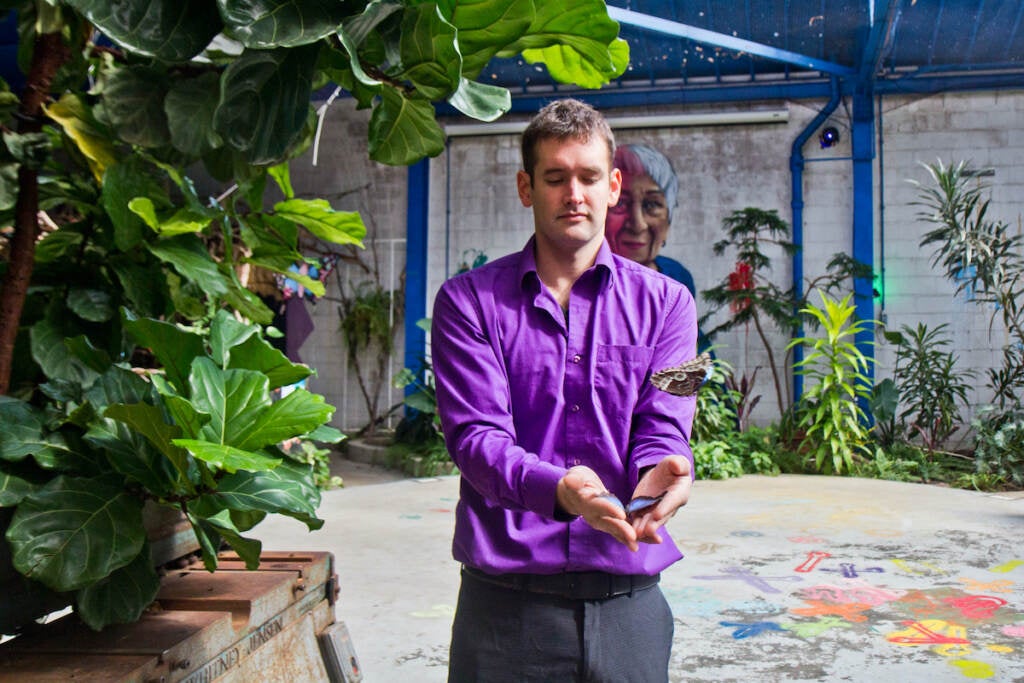
According to a 2018 Philadelphia Inquirer story, the “7,000” number is somewhat misleading. Many were insects the museum was raising to feed the “stars” of the exhibit, the Inquirer reported, though Cambridge said at the time that their loss was still a big blow to the museum’s operations.
Nichols, who was out of town when the creatures went missing, said the case is still murky.
On the one hand, she feels for the animal care staff who were fired or quit.
They did “get screwed by this museum and they really tried their hardest to bring in these animals and to make everything work,” she said.
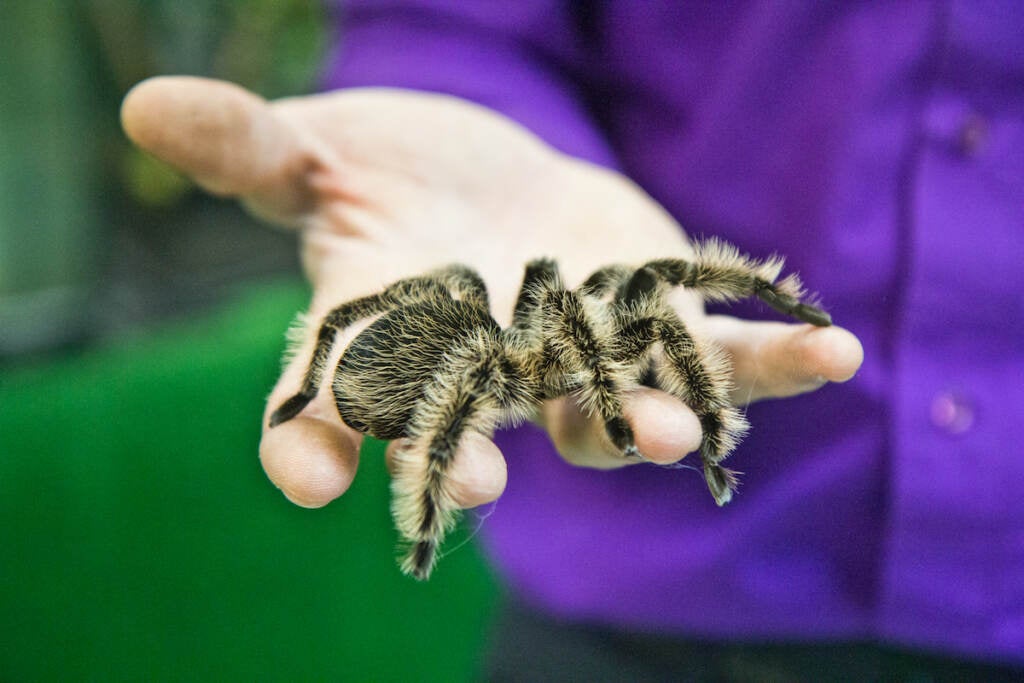
But at the same time, she said there are some animals that went missing that could not have been anyone’s pets: Six tarantulas, for instance, that were temporarily being stored at the insectarium were part of an unrelated federal investigation. The U.S. Department of Fish and Wildlife confirmed this.
After the “heist,” Cambridge called the police, who sent armed officers to question Mumper and some other employees at their homes, including Anthony Mangiola, a teenage intern who was still in high school at the time.
Mangiola said officers first questioned him at home without his parents present, and then later, he was questioned at a police station for around three hours.
“I remember following everything that happened. For about six months, any time someone would come to the door unannounced and knock, my body would seize,” Mangiola said. “I would just stop. If anyone rang the doorbell unannounced. I would stop.”
Neither Mumper, Tomasetto, nor Mangiola have been charged with any crimes.
A Philadelphia Police detective in charge of the case said earlier this year that the case remains open.
‘Bug Out’ and the fallout
A recent documentary series on IMDB TV, which aired this past spring, has now thrust the case of missing bugs back into the spotlight. That four-part series — called “Bug Out” — presented the argument from Cambridge’s former employees that they merely took their own insects back with them after quitting.
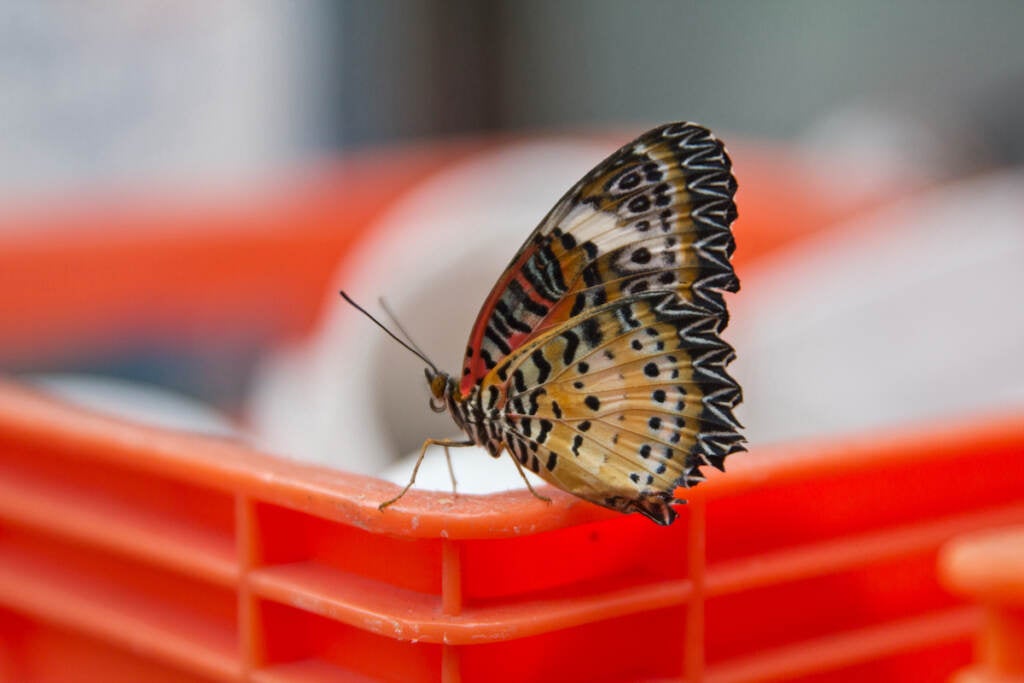
Cambridge, represented by his father who is a lawyer and also a member of the museum’s board, has now sued the filmmakers and some of the interviewees, including Mumper, Tomasetto, and Rzepnicki, for defamation.
The museum’s financial trouble continued after the creatures went missing. In 2018, the museum became a nonprofit to “allow avoidance of taxes the corporation was in no position to pay,” as Cambridge explained in a lawsuit against Rzepnicki, the museum’s former director of operations.
In 2019, an employee who worked in animal care at the time said the department continued to be underfunded. They recalled buying food for animals, and gas for travel shows, without being reimbursed. The employee also said they did construction work, which they did not feel qualified to do. Cambridge maintains that the insectarium reimburses employees for work expenses. WHYY agreed to withhold this person’s name because they fear retaliation from Cambridge.
“We just knew that John was a little eccentric and that was just kind of something we all laughed about and knew … But I don’t think I really realized the extent and extent to which his … eccentric nature was really harmful to the people around him and to the museum as a whole,” the employee said.
A visible example of this that former employees point to is in the back of the museum, where 24 old shipping containers are stacked up in what Cambridge calls “the sandcastle,” a structure he designed himself and describes as artwork. It went up in late 2019.
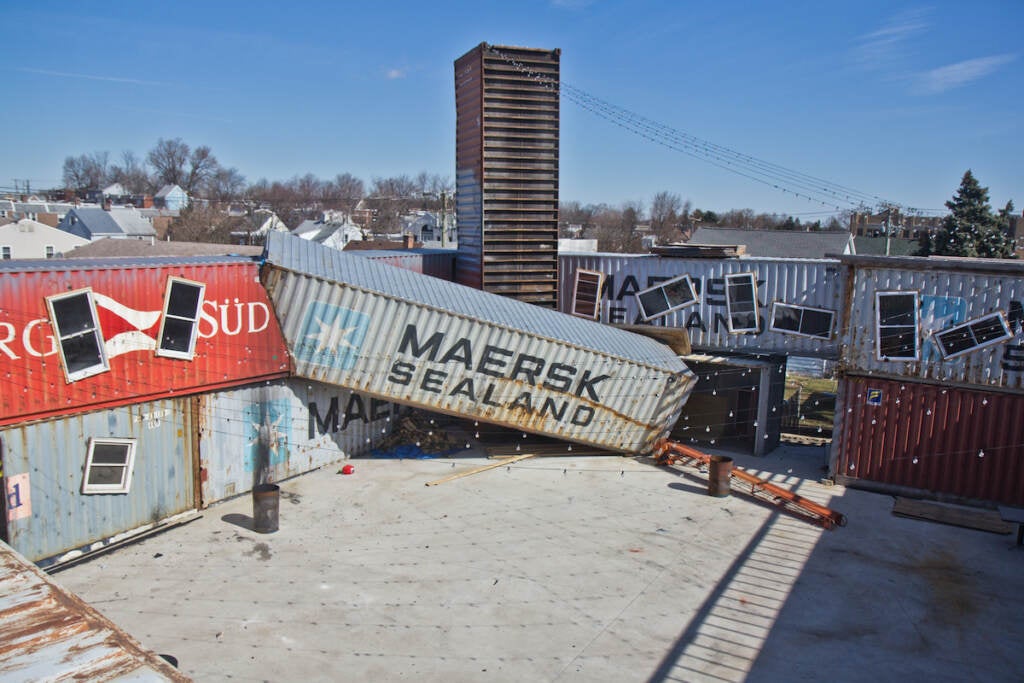
“There’s so few other things around here that … serve as a community beacon, and so if we have an opportunity to create something that you can see from Frankford Avenue and … drum up more interest in this area, we’re going to do it,” Cambridge said.
He said he would like to see it become a performance venue and a plaza.
It certainly got people’s attention, said Trisha Nichols.
“It did cause quite an up-stir when all of these shipping containers started coming in and they’re kind of rusty and ugly looking and they’re getting stacked behind a building … the people across the street were calling in and complaining,” she recalled.
The “sandcastle” and the museum itself also got the attention of Philadelphia’s Department of Licenses & Inspections. The Insectarium has 46 violations in its property history, and failed most of its inspections.
Cambridge said the violations are simply requests that the city asks them to fulfill, and he follows all of them.
“Whatever you’re looking at on there is something that we’re aware of that we’re addressing with the city,” he said. “We are … avidly compliant.”
Keeping the museum afloat was ‘one giant game of Sudoku’
Michael O’Leary, who worked for the Insectarium briefly and has been a friend of Cambridge for more than a decade, said he sees a different side of Cambridge. With him, he claims, every day is a new adventure.
“It was fun and exciting, but it got a bit chaotic at times,” he said. “He was like a true juggernaut. There was no stopping him. Whatever he wanted, it needed to happen.”
“He would shoot for the stars and settle at the moon. So, he had these very huge giant projects and ideas that he wanted to get accomplished that were probably impossible. So if he shot for there and we came to him and said, ‘well, we got half of it done,’ he would then say, ‘Cool, all right, well, this is half.'”
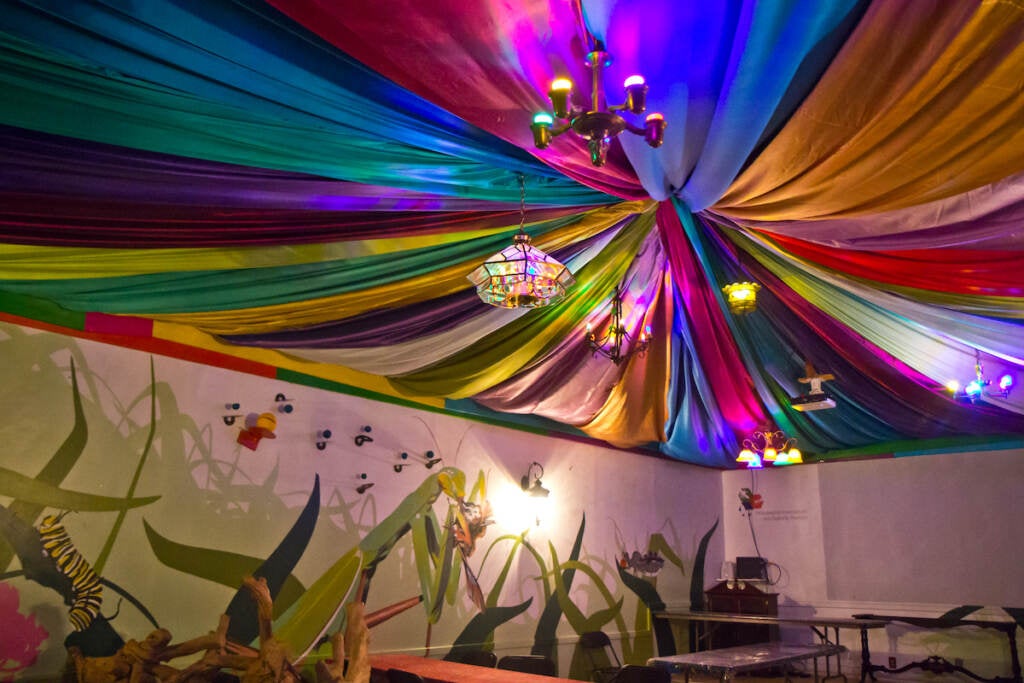
However, O’Leary said that quality also made Cambridge difficult to work with — particularly if you didn’t buy into his vision or didn’t want to push as hard as he did to get something done.
“There are times when I resisted because I thought, ‘this is not the procedure for this … We need to do this … by the book’ … He threw the book out.” O’Leary said. “He was like, ‘We just need to figure out what we’re doing here, figure out how to get it done, or come close.'”
Cambridge said after a few years as CEO, he has learned “not to get bullied as much. There is no possibility that you’re going to make everybody happy.”
“I have been bullied many times … by people who just say, ‘you don’t know what you’re doing, so you shouldn’t do it.’ … No one knows what they’re doing to start out with. That’s not an excuse not to do it and not get stuff done. That’s a call to learn quickly and do so with humility,” Cambridge said.
At the start of the COVID-19 pandemic in 2020, Nichols was still working at the insectarium. She decided to create virtual classes, and later some in-person classes, on insects and science that local schools would pay for. She said the insectarium’s work environment remained the same, and scheduling classes was difficult because she had to balance virtual and in-person classes, how long it would take to drive, which employees liked younger kids, who liked working with which animals … and so on.
“It was like one giant game of Sudoku.”
“Money was tight, and the turnover was wild. But you know what? I was actively teaching kids, interacting with kids every day, watching their faces light up … The reason I stayed was for that,” Nichols said.
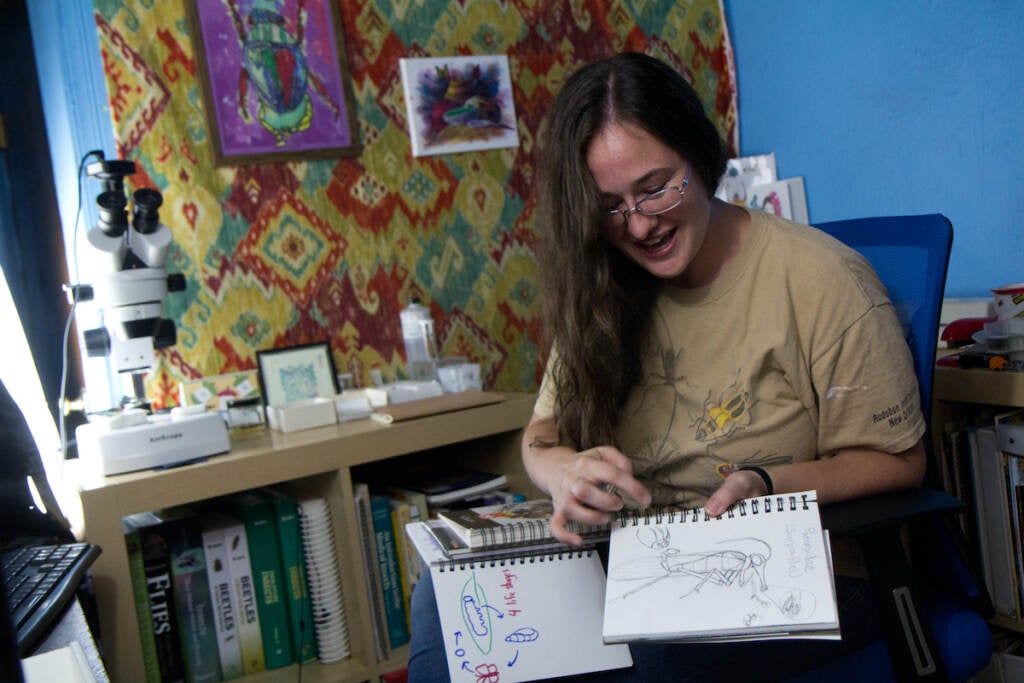
That changed last year. Cambridge created and sold art classes, including classes on juggling, that Nichols thought she and her team of science educators were not really qualified to teach. She said that as the director of education, she would like to have a say in what classes the museum offers, and losing that felt like losing the freedom to create programs and see them through. So she finally quit.
“It ended with him wanting to teach … my educators how to juggle.”
“I really loved the place while I was there and I really loved the work that I was doing and I loved the impact that I was having on the kids and I wouldn’t change any of that for the world,” she said. “I also know that the insectarium was actively changing into a place that I didn’t really want to be a part of … I am a little bit sad every now and again … to drive by it and to know I’m not there.”
She continues to teach classes on science and insects as part of her own business.
This May, Cambridge filed for personal bankruptcy. He said he has not taken a paycheck in a long time and put all of his money into the insectarium.
“I’m proud of my bankruptcy,” Cambridge said. “I did everything I said I was going to do to try and protect and save and grow this place.”

Get daily updates from WHYY News!
WHYY is your source for fact-based, in-depth journalism and information. As a nonprofit organization, we rely on financial support from readers like you. Please give today.



